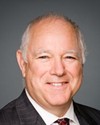From the analysis we've undertaken and the research, I think the pressure comes in the new services that are evolving from the provinces. At a certain point in time we had very little, and then home care emerged. We had nursing homes and old folks homes with different types of titles. What we see now is this emerging piece in the middle--things that you've heard of, like retirement living, supportive housing, assisted living--and all of these different care modalities that are being developed by provinces and in other jurisdictional authorities.
Our challenge is to try to ensure that within the authorities we have at this given day, we're able to renew our policies so that veterans can continue to access the services that best meet their needs. If someone is well enough and chooses to stay at home, then we should be able to support them at home. If they can't stay at home anymore but they don't really need a nursing home, then our challenge is to be able to support them in that place that exists in the middle, in that supported living environment. The greatest challenge for us now is to find ways to be able to consistently apply a supportive policy framework for veterans across that continuum, seeing that this evolution of these middle programs differs across all of the different provinces.




